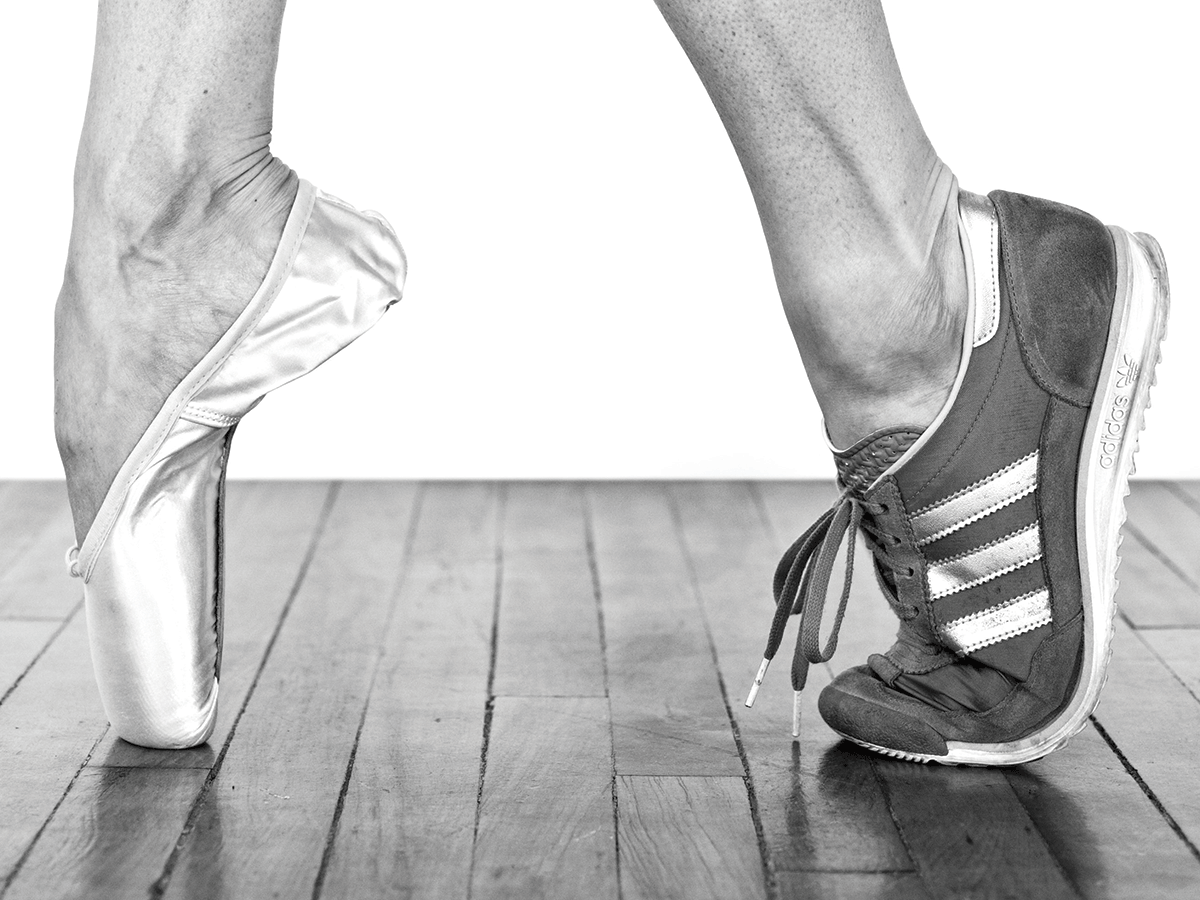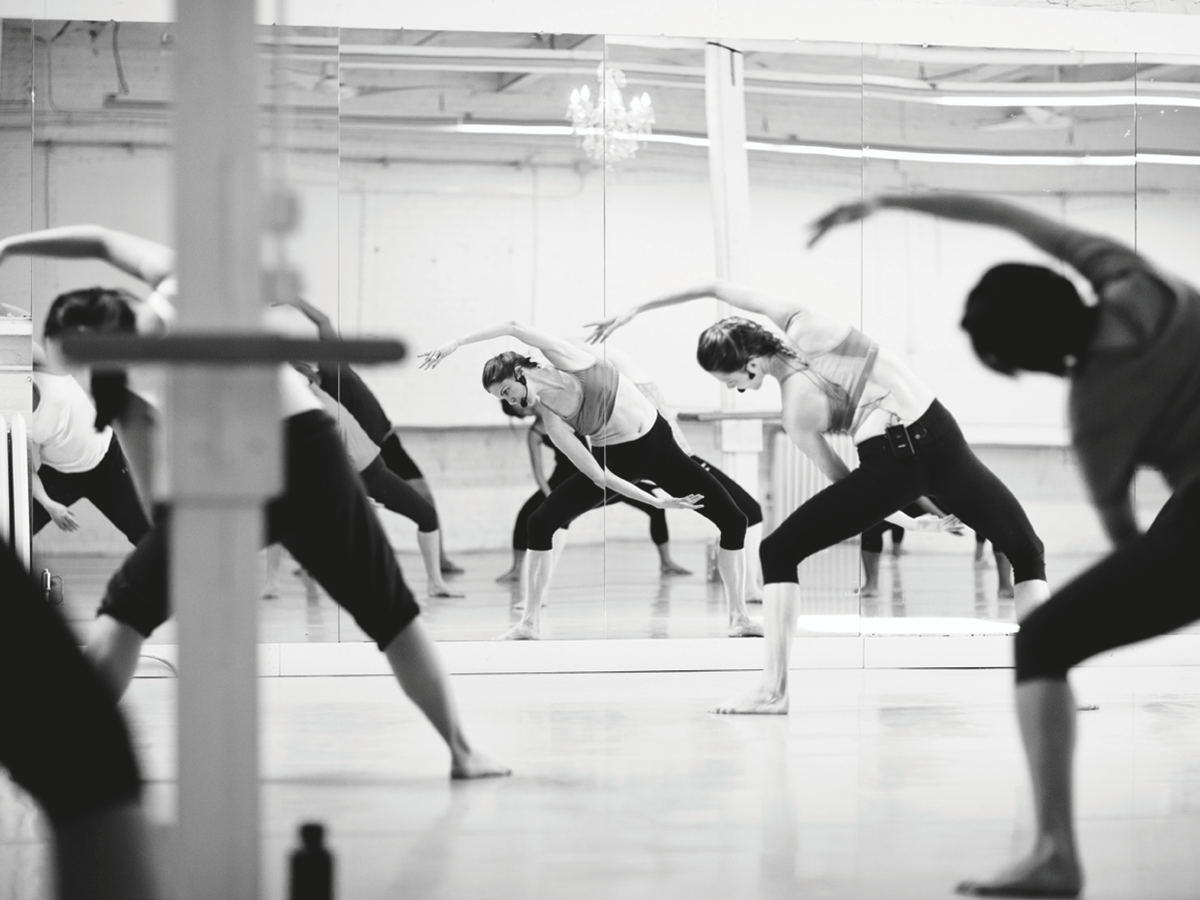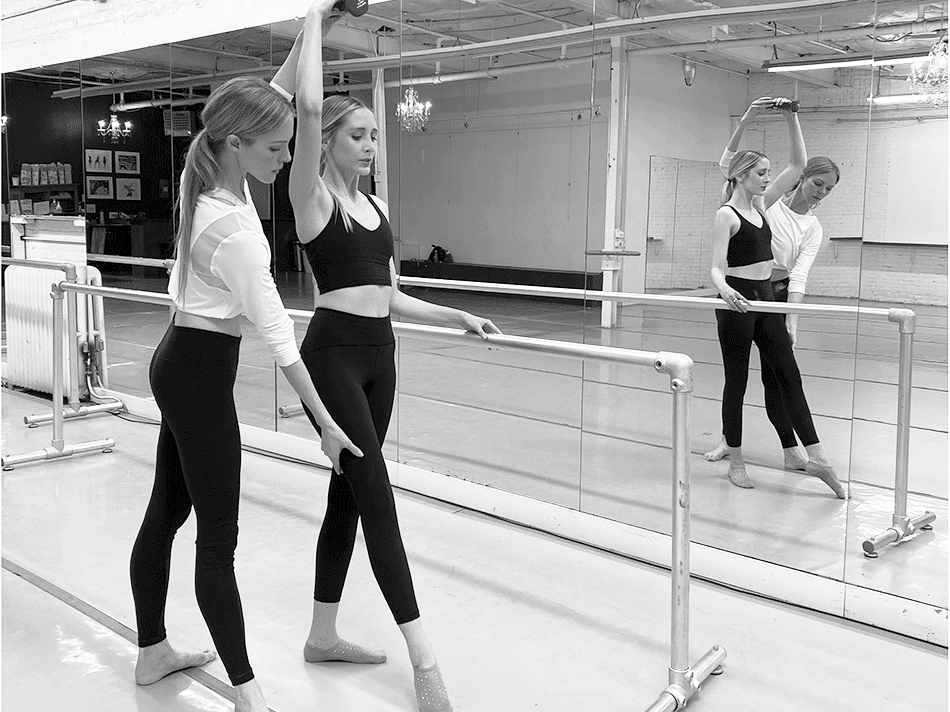The Benefits of a Ballet-Inspired Workout

As digital editor, Renée Reardin, recently learned, a dance-inspired workout can be the answer to a life-long search for the perfect fitness routine – barre none.
Growing up, I didn’t have the best relationship with physical activity. I thought gym class was inconvenient and awkward and found extracurricular sports hazardous and humiliating. My short-lived soccer career ended with a ball to the face and a loose tooth. My dance dreams came crashing down with a kick to the head by a leggy lead dancer during my year-end recital.
It wasn’t until years after I quit sports, at the first sight of cellulite, that I became inclined to dabble in the fitness world again. This is when I discovered dance-focused workouts were my thing, rekindling my love of dance. Tracy Anderson’s fitness videos became my answer to a hazard-free routine I could execute in the humiliation-free zone that is my apartment. Barre became an occasional weekend-wellness jaunt that lured me back into the throes of group fitness. But after 10 years of the same workout routine, my body plateaued and I grew bored of both my lone workouts with a 2D trainer that wasn’t able to correct my technique and the clichéd barre scene with fellow Lululemon-clad, green-juice-drinking keeners. What was I looking for? To take my dance training to another level. To prove that I have some athletic skill. To not let a leggy lead dancer scare me away. I wanted to be a ballerina.
Isn’t barre basically ballerina training for adults with no background in ballet, you ask? No. You see, the allure of barre is in the belief (hope?) that it can give you that coveted ballerina bod – where athleticism meets artform – without the intense training. The reality? Barre is only quasi-inspired by ballet, so it’s unlikely to help you garner all the benefits of the discipline. Since I was doing well at barre (judging by the fact that I hadn’t experienced a humiliating incident that would make me quit), I decided I could take my ballerina training further.
Ballet, meet me, the girl who will likely never master you but aims to emulate your elegance. Could I do it? I had never been all that coordinated or flexible, but I had developed one skill that was perfect for ballet: grace. To look more confident while engaging in forced physical activity as a young girl, my mom advised me to just concentrate on being as graceful as possible. I glided gracefully on inline skates. I ran gracefully away from the ball in dodgeball. I fell gracefully when I skied. Even if I wasn’t flexible enough to execute the perfect plié, retiré or piqué,I had the poise ballet required, which, I figured, would help me fake it until I made it.
A colleague introduced me to the Extension Method, a fitness program developed by Toronto’s Jennifer Nichols back in 2003 that offers beginner ballet lessons, along with cardio and muscle-conditioning classes built on ballet basics. Think the finale of Center Stage, where Jody Sawyer performs that fast-paced dance number to the song “Canned Heat” by Jamiroquai. I was sold – a fitness-focused ballet studio seemed less intimidating and more accessible than a professional ballet school (plus the Center Stage thing).

I first tried the Allegro class, which is inspired by the fast movements in the “allegro” portion of a classical ballet class. Then I tried beginner ballet, a barre class and a sculpt class. I couldn’t get enough. I signed up for classes after work and on weekends. I planned my trips away and other engagements around the studio’s schedule. Is it because I finally found my life’s calling? Not exactly. But I was obsessed.
Unlike barre, the classes offered at the Extension Method aren’t just nominally ballet inspired; they are built on the principles of true classical ballet, are taught by professional dancers and go well beyond the barre. Nichols has designed classes around the many fitness elements of the discipline, which include cardio, conditioning and muscular strength. “All of the classes teach safe and correct ballet technique, each with a different fitness focus,” she says. Nichols’ classes teach proper ballet form and posture at the barre, as well as how to apply the moves away from the barre in classes where you jump and move across the floor, like Adage, in an approachable way. “We keep the artistry, but we’re not training you to be a professional dancer,” says Nichols. “It’s about loving movement, keeping the body flexible and finding your balance.”
It didn’t take long for me to recognize the many benefits of true ballet-inspired fitness. Most notably, it improves strength, flexibility and posture. In fact, researchers believe ballet can help those with Parkinson’s disease, as it may improve their stability and fluidity of movement. Ballet can also help you look leaner and taller since it concentrates on extending the body, lengthening muscles and improving posture, says Nichols.
What’s more, ballet movements focus on the shifting of body weight, which can have long-term benefits, such as improving agility. A 2016 study found that ballet dancers use their muscles more effectively and have better balance than those who don’t dance. And you don’t have to be a professional ballet dancer to reap the benefits of a workout inspired by the discipline. “Everyone can be successful at this if you stick with it, are consistent and don’t judge yourself,” says Nichols. “Introducing dance to your body is like learning a new language: It takes time, but it comes if you keep trying and have patience.”
“It’s really about finding your joy and freedom in movement,” says Nichols. “We try not to compare ourselves with our ideals or other people. It’s about how you feel, not how you look.”

Aside from getting stronger, developing a more sculpted figure (I think) and becoming more flexible with every class I take, my posture has improved dramatically. Not only am I standing straighter but I’ve also learned how to improve my alignment (suck in the ribcage, tuck in the tailbone), so I have fewer backaches and my body looks a little more ballerina-esque (to me, at least).
But the main reason I’ve become addicted to ballet-inspired fitness is because of something I didn’t expect: its mental health benefits. Ballet has taught me the power that my body has on my mind and vice versa. Standing taller and straighter instantly gives me confidence. Moving my body in beautiful ways instantly makes me feel beautiful. The graceful gestures and piano music in traditional ballet class relax me more than any yoga class ever could. The upbeat dancing in the more active class boosts my mood more than any meditation session ever could. I’ve also come to appreciate the joys of group fitness. There’s a sense of togetherness I feel with others, dancing in unison through the moves, and a sense of community I can feel when we recognize and support one another’s progress. It’s something that was missing from the sports teams I was on as a child.
Turns out, I might have an athletic bone in my body after all – I just had to find the right place to hone it. Over the past five months, I’ve taken 81 classes at the Extension Method, according to my Mindbody app. That works out to about four classes a week.
Despite all those classes, I still can’t do the splits and I look like Bambi learning to walk while doing pirouettes across the floor, but at least I look graceful trying.
Next, learn about the streaming classes offered by the Extension Room (and other Canadian fitness studios) during the pandemic.




